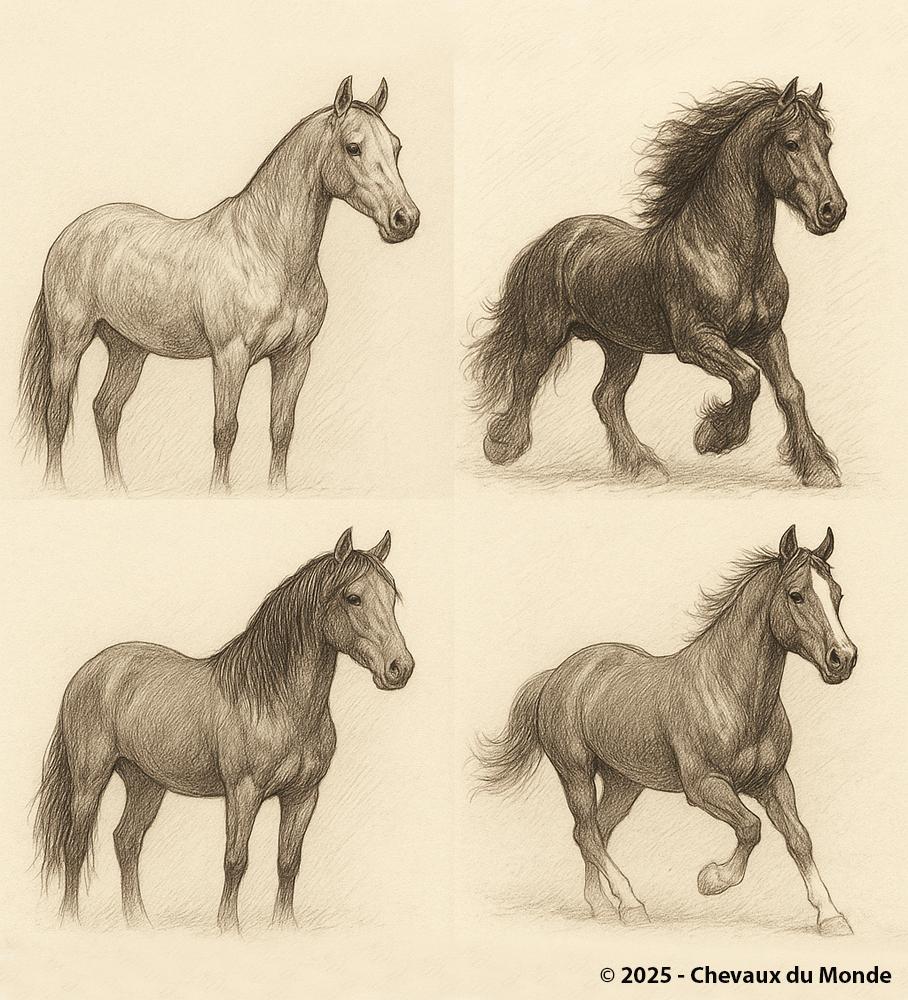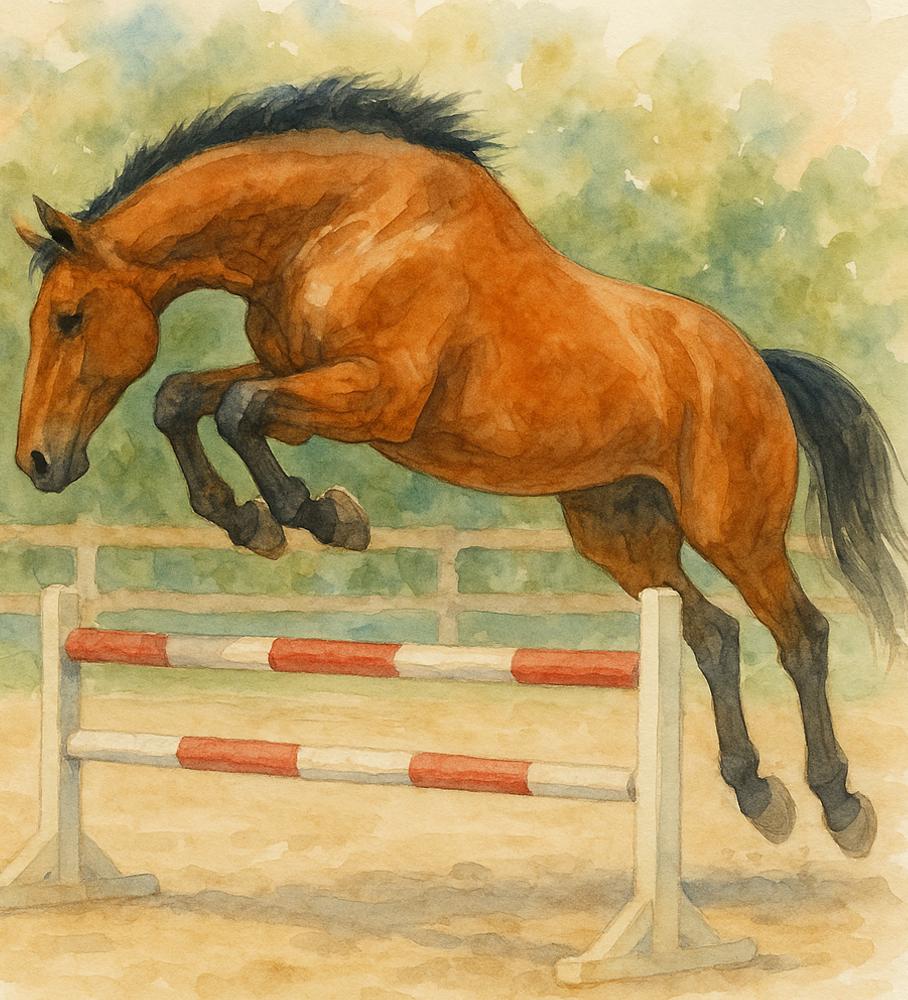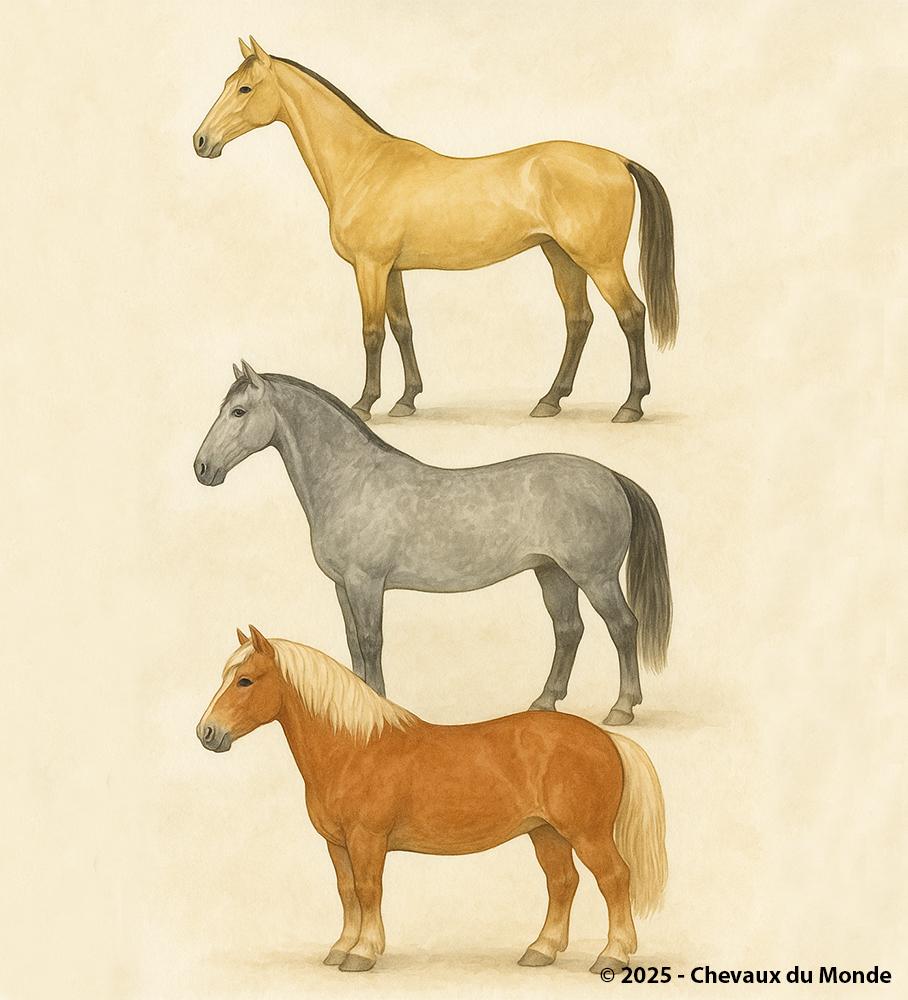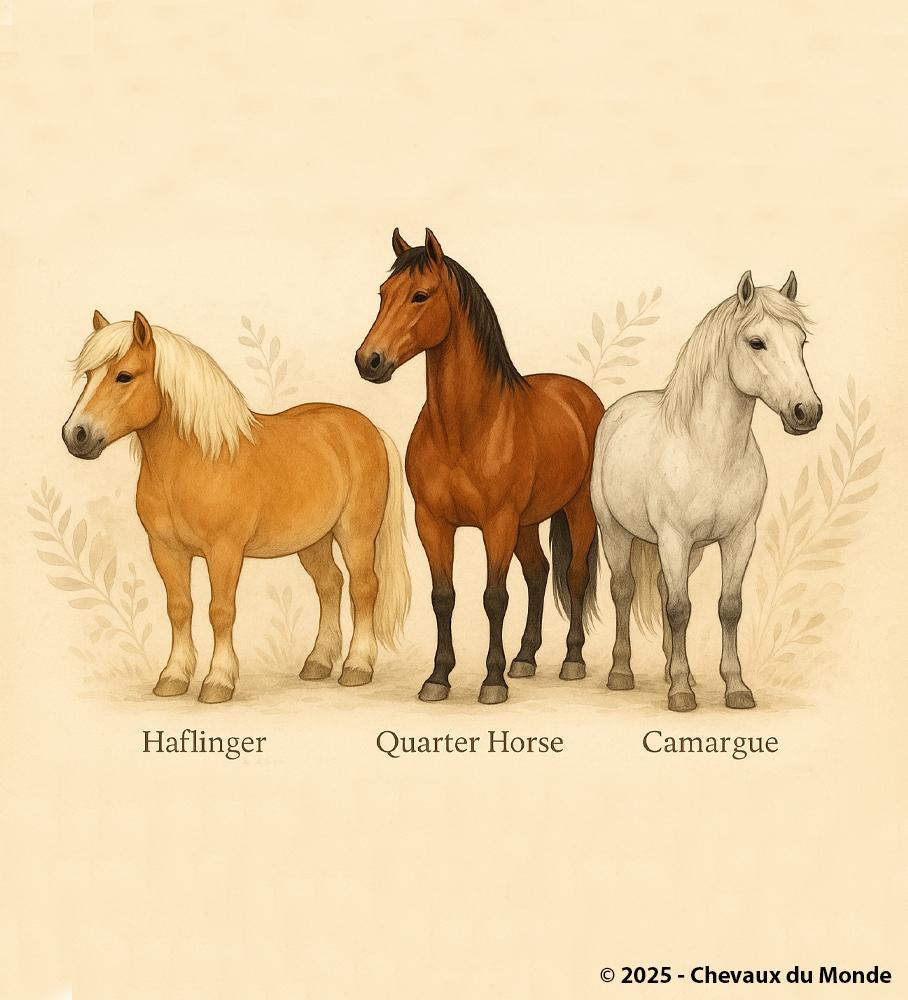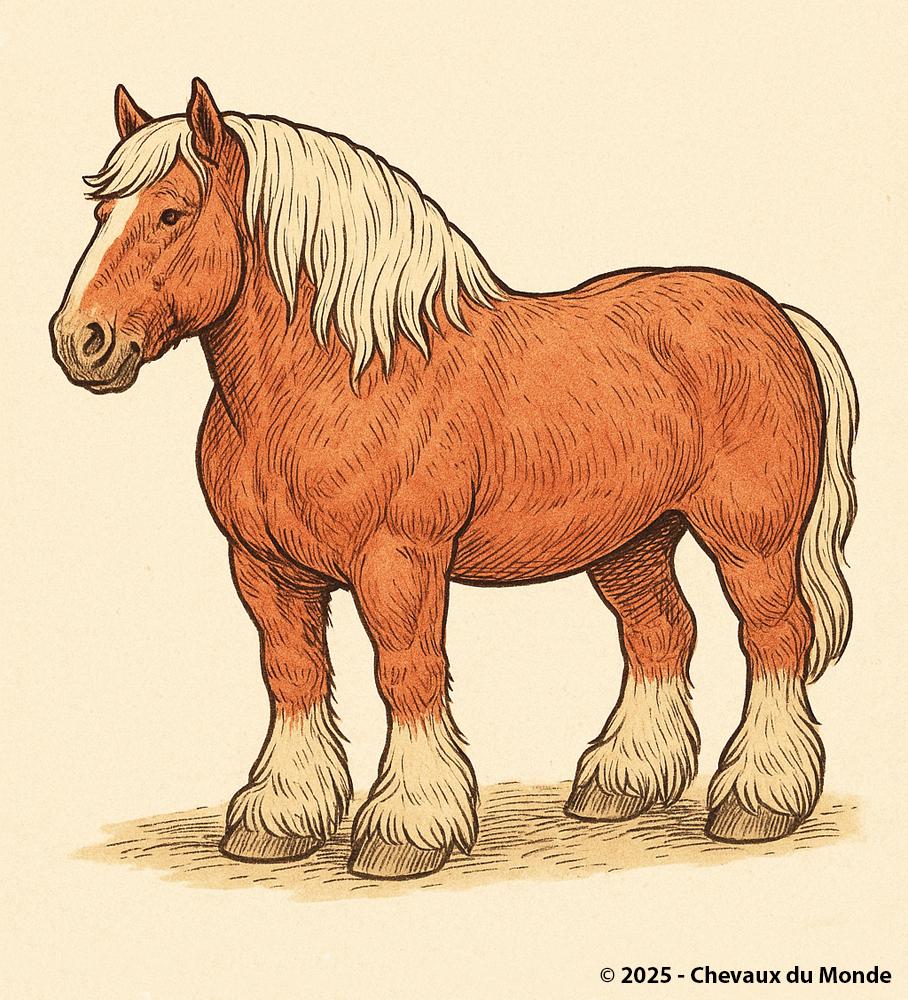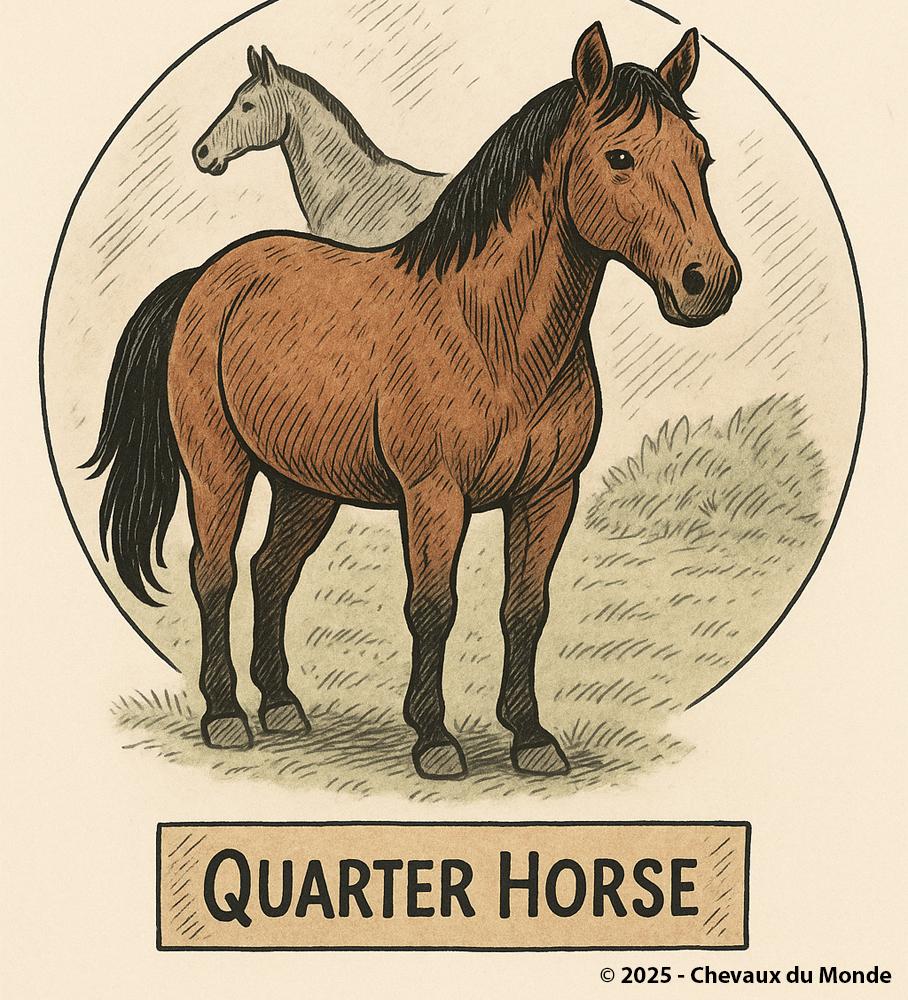WHICH HORSE FOR TRAIL RIDING? BREEDS, QUALITIES AND PRACTICAL TIPS
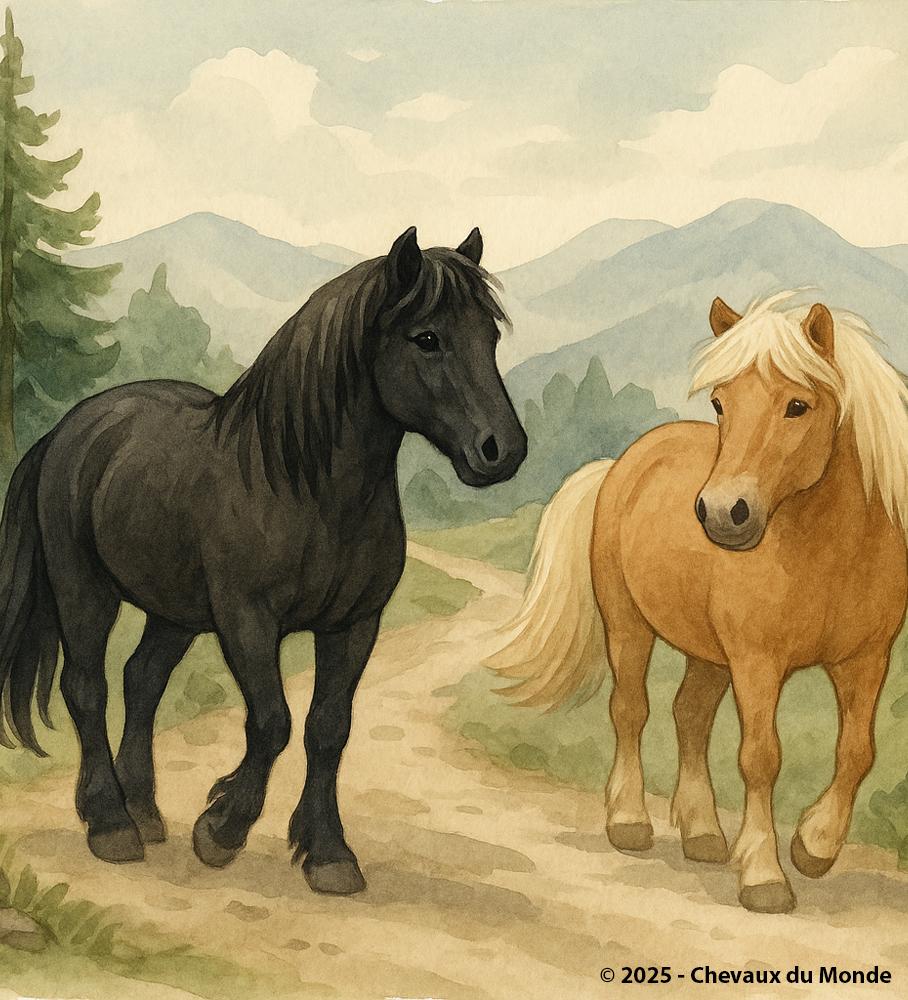
For trail riding, horses must be steady, surefooted, and enduring. Whether rustic like the Fjord, strong like the Haflinger, or nimble like the Merens, the focus is on temperament and riding comfort, not speed.
Walking through nature alongside your horse is a unique experience. But choosing the right mount is key.
Why Aren’t All Horses Suitable for Trail Riding?
Trail riding requires specific physical and mental qualities. A good trail horse must be:
– Enduring, to walk for several hours without excessive fatigue
– Surefooted, able to handle uneven terrain (rocks, mud, slopes)
– Calm and reliable, to cope with unexpected situations (noises, animals, roads)
– Versatile, capable of carrying a rider and possibly some gear
Not all breeds meet these criteria. For instance, sport horses may be too sensitive or nervous for long rides in nature.
Top 6 Best Breeds for Trail Riding
The Mérens (France)
– Small black horse from the Ariège region
– Hardy, rustic, with excellent footing
– Enduring and docile, perfect for mountain trails
– Great for both beginners and long-distance treks
The Fjord (Norway)
– Nordic pony with a dun coat and two-toned mane
– Very calm, sturdy, and easy to manage
– Ideal for children and cautious riders
The Icelandic Horse (Iceland)
– Expert on tough and rugged terrain
– Excellent temperament, capable of long rides
– Famous for its extra gaits (tölt and pace), ensuring unmatched comfort
The Barb (North Africa)
– Light, enduring, and intelligent horse
– Comfortable in hot, dry climates
– Highly valued for its resilience and bravery
The Criollo (South America)
– Traditionally used for long distances in rural areas
– Resistant to heat and cold
– Very self-sufficient and rustic
The Camargue Horse (France)
– Small white horse native to southern marshlands
– Agile, tough, and emotionally stable
– Excellent for beach rides and wetlands
Small Horse or Large Mount?
– A small horse (between 13.1 and 14.3 hh) is often better suited: more stable, less food required, easier to maneuver through narrow trails.
– Larger horses may suit heavier or more experienced riders but demand greater physical condition.
Comfort depends more on gait smoothness and saddle fit than on the horse’s height.
Starting Trail Riding: Our Tips
– Begin with short rides (1–2 hours) to condition your horse and yourself
– Make sure your horse is relaxed and focused, even on unfamiliar terrain
– Always carry safety gear: halter, lead rope, knife, water, and a first-aid kit
– Learn to read equine trail maps and plan your route
– Never go on a long ride alone without previous experience
What About Equipment?
– A proper trail saddle, with rings for saddlebags
– Light saddlebags, evenly distributed
– A solid halter for rest breaks
– Leg protection, depending on terrain
– Hoof boots, if your horse is barefoot and unshod
👉 See also:

